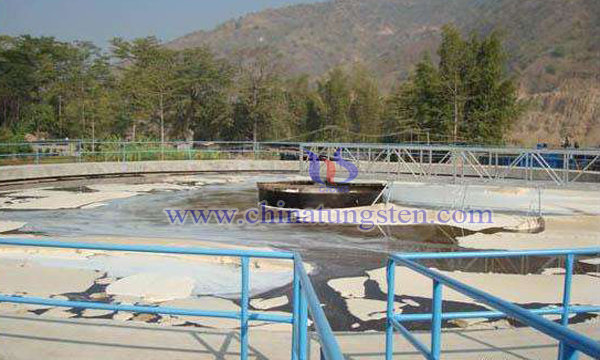Molasses Alcohol Wastewater Treatment by Tungstate Photocatalyst
- Details
- Category: Tungsten Information
- Published on Saturday, 30 March 2019 23:07
Molasses alcohol wastewater is a kind of high-concentration and high-chroma organic wastewater discharged from the alcoholic workshop of sugar factory after fermentation of molasses to produce alcohol. It is a complex and refractory organic wastewater. It contains rich protein and other organic substances. It also contains more inorganic salts such as N, P, K, Ca, Mg and higher concentration of SO42- and so on. Most of the wastewater is acidic, and its chroma is very high, which will cause serious pollution. Water quality, environment, or cause soil acidification and consolidation, crop disease.

In recent years, with the development of nano-tungstate photocatalytic technology, more and more tungstate chemicals have been used to degrade industrial wastewater such as food, textile, leather, sugar, paper and molasses alcohol wastewater. The photocatalyst can be irradiated by visible or ultraviolet light, and it can enter the air for photocatalytic degradation.
The tungstate photocatalyst consists of tungstate anion or polytungstate anion and metal cations. The tungstate radical is WO4 2-or WO6 6-, and the polytungstate radical is W2O96- OR W3O102-. The metal cations include bismuth, antimony, lead, titanium, zirconium, tin, copper and zinc, which are water-soluble metal salts. For example, common bismuth tungstate photocatalysts are prepared by:
100 grams of bismuth nitrate and 36 grams of ammonium tungstate were dissolved in aqueous solution, then mixed and precipitated under stirring. After precipitation aging for 2 hours, the precipitate was filtered and separated. The precipitates were dried at 11O ℃ for 10 hours, then roasted at 600 ℃ for 1 hour, cooled and impregnated with 0.3 g of ferric nitrate solution for 8 hours, then dried under infrared lamp and roasted at 600 ℃ for 2 hours to obtain Bi2WO6 catalyst.
Bismuth tungstate was used to treat molasses alcohol wastewater. After biochemical treatment, the wastewater directly enters the photocatalytic degradation reaction. The dosage of catalyst is 3g/L, the power of high-pressure mercury lamp is 300W, the air flow rate is 126L/h, and the stirring speed of rotor is 5.5r/s. After photocatalytic degradation for 3 hours, the decolorization rate reaches 99%, the COD removal rate reaches 85%, and the mineralization of pigments is degraded to completely solve the problem of pigments in molasses alcohol wastewater.
It has been proved that the process of photocatalytic treatment of industrial wastewater such as food, textile, leather, sugar and papermaking wastewater with tungstate photocatalyst, especially molasses alcohol wastewater, has the characteristics of low operation cost, high efficiency and low investment. Especially, the process of photocatalytic degradation using sunlight has lower energy consumption and better performance.
- Tungsten Oxide Manufacturer & Supplier, Chinatungsten Online: www.tungsten-oxide.com
- Tungsten News & Prices of China Tungsten Industry Association: www.ctia.com.cn
- Molybdenum News & Price: news.molybdenum.com.cn
- Tel.: 86 592 5129696; Fax: 86 592 5129797; Email: sales@chinatungsten.com



 sales@chinatungsten.com
sales@chinatungsten.com